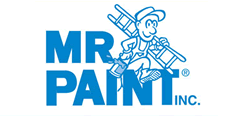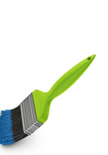
 Why a Painting Contractor?
Why a Painting Contractor?
It seems that every year more and more homeowners are choosing to hire a professional painting contractor rather than do it themselves. A professional painting contractor can offer a level of quality not easily obtained by the average do-it-yourselfer.
House painting is labour intensive and can be dangerous; as both interior and exterior painting will require considerable physical effort. Typically,exterior painting is the most demanding. Some things to consider before starting any painting project.:
- Are you comfortable with heights? Climbing ladders is a major part of any paint job.
- Are you capable of moving heavy objects, like furniture? Lifting and moving things are also a big part of painting. Make sure you are physically able to do it.
Time is another factor to consider. Depending on the project, it could take several days of effort to finish the painting. This is especially true for exterior painting.
Can you live with things being unfinished for a while if you are called away? For most people, they only have the weekends to accomplish something; an average exterior could take a month or more to accomplish working only weekends. Experience counts. Its hard to overstate the importance of experience. There is no such thing as “cookie cutter” paint jobs, where the same procedures can be used over and over with the same great results. Even new construction is a challenge from one job to the next.
Every home is different, and requires different preparation, and products to achieve beautiful and lasting results. Experience allows us to create results you can be proud of.
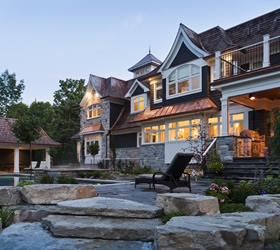
|
1. Paint Color
Colour refers to the pigment of the paint. It is the ingredient that is responsible for covering and hiding the surface. All paint colours are created from the same base pigments that include sienna, umber, titanium oxide and zinc oxide. These pigments are made from particles and then mixed into the paint. If paint sits the pigment base will separate from the paint and will need to be shaken in order to evenly re-distribute the pigment.
2. Ability to Spread
A paints ability to spread is affected by the solvent used. In the past, wax, water, and lime were the dominate solvents used in paint. In recent times, water is the carrier for water-based paint, while petroleum serves as solvent for oil-based paints. You will often hear the solvent being referred to as a medium, carrier or thinning agent. The other ingredients that are put into a can of paint are suspended in this liquid base which allow it to spread evenly. |
3. Adhesion
It is essential for paint to adhere to different surfaces and maintain a uniform appearance. The binder is the ingredient that allows the paint to maintain an even coverage upon the surface to which it is applied and therefore a protective finish.
Different types of paint use different binders; water based paints use latex as a binder, where as oil based paints use alkyd as a binder.
Acrylic, vinyl or a combination of both are used to form the latex binder for water based paints, and either natural oil or alkyd are used for the alkyd binder in oil based paints.
4. Oil vs. Water-Base
Oil-base paint is known for taking longer to dry than water-base. Generally, the longer the drying time, the better the paint will flatten out to hide brush marks; however, paint that dries fast allows you to recoat in a timely fashion. Oil based paints have a very distinct odour that some people find offensive, but when it comes to durability and a silky smooth finish oil-base is difficult to compete with.
Water-base paints, on the other hand, deserve the people’s choice award for paints; it dries rapidly, has a low odour, and is easily cleaned up. With the upcoming ban of oil paints manufacturers are developing “water-based-oil paints”, they demonstrate all the best qualities of oil paints with all the best qualities of latex paints. Sounds to good to be true, lets hope not, we’ve tried it and we like it so far, but the jury is still our on this one, lets see how much longevity we get out of it, after all it’s not the first miracle paint to come along, most of which do not live up to the hype. |
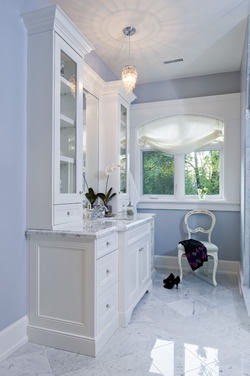
|
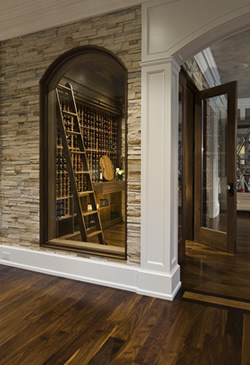
|
5. Gloss
The gloss or the finish of the paint you choose for your room décor has quite an impact on the look of your room. Gloss is determined by the ratio of pigment to binder. Basically, the more binder used in paint, the shinier the finish will be. Finish choices range from flat (dull) to high-gloss (brilliant shine). When looking for paint, be sure to check the finish. Have the salesperson put some paint on a mixing stick and watch it dry to get an idea of what it will look like.
- Paints with flat or matte finish have no shine and for this reason they hide imperfections in the wall. Unfortunately they are not stain-resistant, but certain paints with matte finish and high stain resistance are also available in the markets.
- Eggshell paints or velvet-finish paints have very slight gloss or finish. They are soft and convey a warm look to the room. Also, they are easier to clean. They are commonly used for most bedroom and living room décor themes.
- Paints with satin or semi-gloss finish are commonly used to highlight architectural details and focal points of the home. They are also used in kitchens and baths because they are easy to clean.
- Very high gloss is quite reflective and should be normally reserved for doors and trims and to create special effects.
|
6. Primers
Primer is an essential element to a paint job. It is responsible for sealing any well-prepared surface, leaving a solid base ready for paint. Using a primer will make your finish coat look better and last longer by correcting existing surface problems that may lead to premature paint failure. Generally, the only time a primer is not needed is when the surface is in good condition, but even then it couldn’t hurt to use it. Primers can be tinted and used to cover a darker shade and they can also be used to hide slight imperfections in porous surfaces. Be sure to check to see the primer is made for the right surface you’re covering. Using the right primer will increase the quality and durability of your paint job. Primers exist in many forms and serve in a variety of functions. There are 3 basic types to choose from which include:
- Alkyd - Oil base
- Acrylic - Latex
- Tinted Shellac
|
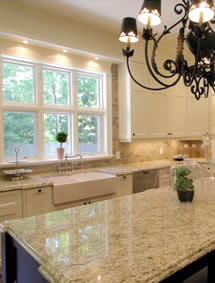
|
![]()
 Why a Painting Contractor?
Why a Painting Contractor? 